Two watch brand titans stand tall, each with a legacy steeped in precision, innovation, and timeless design. Citizen and Seiko, two Japanese watchmaking powerhouses, have captivated enthusiasts and collectors alike with their exceptional timepieces for decades.
In the United States, both Citizen and Seiko enjoy significant popularity and have established strong presences in the market. However, Seiko tends to have a slightly larger following and a longer history of brand recognition in the U.S., particularly among watch enthusiasts and collectors. According to a survey by Statista, Seiko has a bit higher brand recognition compared to Citizen with 60% vs 55% of respondents aware of the brand respectively.
Seiko’s reputation for quality, innovation, and diverse product offerings has contributed to its widespread popularity in the American market. The brand’s range of watches, from affordable quartz models to high-end mechanical timepieces, caters to a broad spectrum of consumers, appealing to both casual wearers and serious watch aficionados.
While Citizen is also well-regarded in the U.S. and has a substantial customer base, Seiko’s longstanding presence and reputation for craftsmanship may give it a slight edge in popularity among American consumers. On the other hand, Citizen got a higher revenue of 62.2 billion Japanese yen in 2002 than only 24.33 billion Japanese yen for Seiko. As aficionados debate the merits of Citizen’s modern sophistication against Seiko’s traditional craftsmanship, the question remains: which brand reigns supreme?
History and heritage
In terms of Seiko vs Citizen heritage, both brands boast extensive experience and a legacy of excellence in watchmaking. Seiko holds the distinction of being one of the oldest watchmaking companies in Japan, with a history spanning over a century. On the other hand, Citizen, while slightly younger in terms of its founding, has also amassed a wealth of experience and achievements since its establishment.
Seiko’s history dates back to 1881 when Kintaro Hattori opened a watch and jewelry shop in Tokyo, Japan. This marked the beginning of Seiko’s journey, which would later lead to the establishment of Seiko Corporation in 1924. Seiko quickly gained recognition for its commitment to precision and craftsmanship, producing Japan’s first wristwatch in 1913 and its first quartz watch, the Seiko Astron, in 1969, which revolutionized the industry.
Throughout its history, Seiko has been at the forefront of horological innovation, introducing a wide range of groundbreaking technologies and advancements. These include the development of the first quartz chronograph in 1983, the Spring Drive movement in 1999, and numerous other innovations that have solidified Seiko’s reputation as a pioneer in watchmaking.
Citizen’s origins can be traced back to 1918 when the Shokosha Watch Research Institute was established in Tokyo, Japan. In 1924, the institute produced its first pocket watch under the name “Citizen.” The brand officially adopted the name Citizen in 1930, symbolizing its commitment to being a “citizen of the world.”
Throughout the years, Citizen has distinguished itself through its innovative spirit and dedication to technological advancement. In 1956, Citizen introduced Japan’s first shock-resistant watch, and in 1976, it launched the world’s first light-powered analog quartz watch, the Citizen Eco-Drive. This breakthrough technology cemented Citizen’s position as a leader in eco-friendly watchmaking and contributed to its global success.
Both brands have played pivotal roles in shaping the landscape of the watch industry, with a shared commitment to innovation, quality, and precision. While Seiko may have a longer history, Citizen’s contributions to horology and its innovative technologies have solidified its position as a prominent player in the global watch market.
Quality and craftsmanship
Both Citizen and Seiko are known for their high-quality timepieces. When comparing Citizen vs Seiko quality and craftsmanship, both brands have distinct strengths. Citizen emphasizes innovation, offering features like its Eco-Drive technology that converts light into energy. This approach showcases a commitment to sustainability and modern watchmaking.
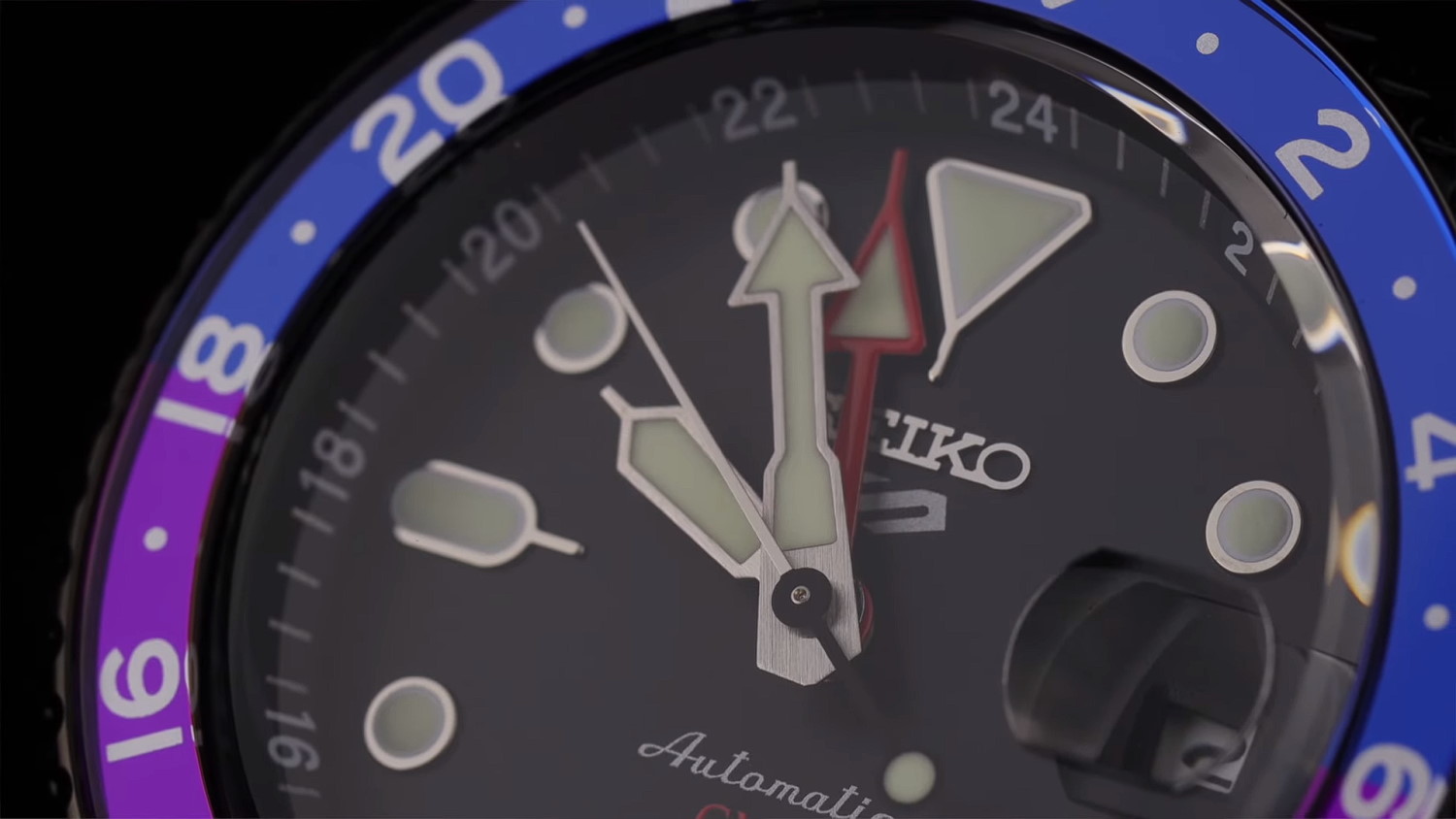
Related Post
Check the real owner’s review on the Seiko Kinetic watch. Explore the benefits and drawbacks of this movement.
Seiko, on the other hand, is revered for its traditional craftsmanship and rich heritage. Watches from Seiko often exude a sense of history and meticulous attention to detail, reflecting the brand’s longstanding presence in the industry. While Citizen excels in providing value for money with its innovative features, Seiko’s diverse range of designs appeals to a wide range of tastes, from classic to avant-garde.
For instance, Citizen watches have received notable praise from authoritative watch collectors and enthusiasts for their quality and craftsmanship.
A review on The Adult Man highlights Citizen’s ability to deliver exceptional value, emphasizing the robust build quality and technical features of models like the Promaster Nighthawk and Eco-Drive Chandler. The review praises Citizen for their innovative Eco-Drive technology, which eliminates the need for battery changes, and their commitment to creating durable, everyday watches. The reviewer notes the impressive finishing on the Promaster Diver and Chandler, despite pointing out the use of mineral crystals over sapphire in many models.
Similarly, a detailed review on aBlogtoWatch discusses the Citizen Caliber 0200, which is a result of a collaboration between Japanese and Swiss craftsmanship. This movement merges Japanese precision with Swiss decorative techniques, leading to a product that meets and exceeds chronometer standards. The review appreciates the aesthetic and functional qualities of the Caliber 0200, including its meticulous regulation system and high accuracy, showcasing Citizen’s capacity to produce world-class mechanical watches.
Overall, collectors and enthusiasts regard Citizen watches as highly reliable, value-packed timepieces that blend innovative technology with solid craftsmanship. Their commitment to quality, evident in both everyday models and more advanced mechanical movements, makes Citizen a respected brand in the horological community. Ultimately, the choice between Citizen and Seiko depends on individual preferences, including design aesthetic, technological innovation, and budget considerations.
Movement technology
Both brands offer a wide range of movement types, from quartz to mechanical to solar-powered. Consider the accuracy, durability, and maintenance requirements of each movement type. Both Seiko and Citizen have made significant contributions to horological innovation. Seiko’s Spring Drive and Kinetic movements exemplify the fusion of mechanical and electronic engineering, while Citizen’s Eco-Drive and Caliber 0100 highlight advancements in light-powered technology and precision quartz movements. Each brand’s commitment to pushing the boundaries of watchmaking technology continues to resonate with collectors and enthusiasts worldwide.
Seiko movement technologies
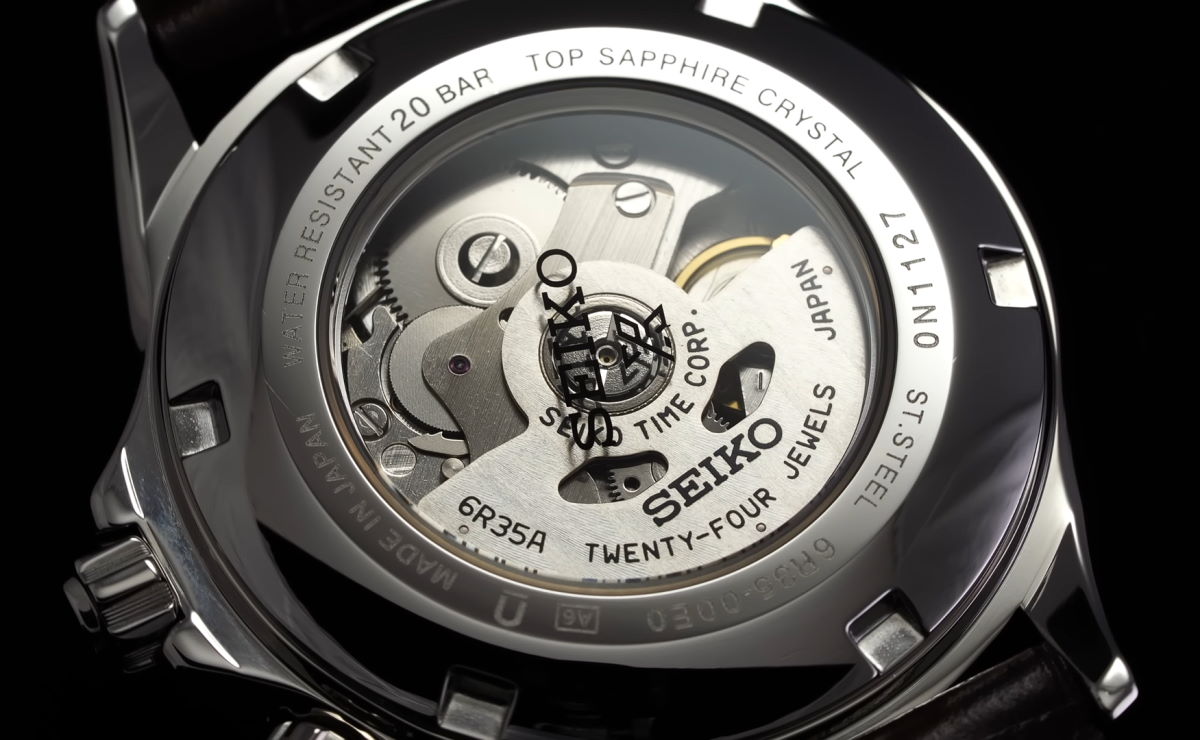
Related Post
Check the real owner’s review on the Seiko Kinetic watch. Explore the benefits and drawbacks of this movement.
Like Citizen, Seiko is also known for its innovative technologies, such as the Spring Drive movement and the Kinetic system. These advancements showcase Seiko’s ability to blend traditional watchmaking techniques with modern technology.
Spring Drive
Spring Drive is a unique technology developed by Seiko that combines the high torque of a mechanical watch with the accuracy of a quartz watch. Introduced in 1999, the Spring Drive mechanism uses a traditional mainspring to store energy, but instead of a mechanical escapement, it uses a “Tri-synchro regulator.” This regulator integrates three types of energy: mechanical, electrical, and electromagnetic.
- Mechanical Energy: Generated by the unwinding of the mainspring.
- Electrical Energy: Produced by a small generator driven by the mainspring.
- Electromagnetic Energy: Used to regulate the speed of the glide wheel.
The result is an exceptionally smooth movement of the second hand and an accuracy of ±1 second per day, which is unparalleled in mechanical watches.
Kinetic
Seiko’s Kinetic technology, introduced in 1986, uses the movement of the wearer’s wrist to generate electrical energy. This energy is stored in a rechargeable battery, known as a capacitor, which can power the watch for months or even years without the need for battery replacement. The Kinetic movement combines the self-sufficiency of an automatic watch with the accuracy of a quartz movement.
9F Quartz
The 9F quartz movement is part of Seiko’s Grand Seiko line, introduced in 1993. It is known for its high precision, achieving an accuracy of ±10 seconds per year. This movement incorporates several innovative features, such as a twin-pulse control motor that enhances the strength of the hands, an instantaneous date change mechanism, and a super-sealed cabin to protect against dust and humidity.
Citizen movement technologies
Citizen is particularly praised for its Eco-Drive technology, which harnesses light to power the watch, eliminating the need for regular battery replacements. This innovation is often highlighted as a significant advancement in watchmaking, showcasing Citizen’s commitment to sustainability and convenience.
Eco-Drive
Citizen’s Eco-Drive technology, introduced in 1976, is a revolutionary solar-powered system. Eco-Drive watches can generate power from any light source, whether natural or artificial, and store it in a rechargeable lithium-ion cell. This technology eliminates the need for regular battery replacements and is known for its long power reserve, with some models capable of running for up to 6 months in complete darkness.
Caliber 0100
Citizen’s Caliber 0100, launched in 2019, is touted as the world’s most accurate light-powered watch movement. It boasts an astonishing accuracy of ±1 second per year. The movement achieves this precision through several technological innovations, including an AT cut crystal oscillator and a temperature correction function that adjusts the timekeeping to account for temperature fluctuations.
Duratect
While not a movement technology per se, Citizen’s Duratect is worth mentioning. It is a surface-hardening technology that increases the scratch resistance of watch cases and bracelets. This proprietary treatment ensures that Citizen watches maintain their appearance and durability over time.
Design and style
Evaluate the design aesthetics of each brand. Citizen tends to offer modern and sleek designs, while Seiko often incorporates traditional Japanese design elements. Choose the one that aligns with your personal style preferences.
When comparing the design and style of Citizen and Seiko watches, it’s essential to look at specific watch series from both brands to appreciate their unique approaches and aesthetic philosophies.
Citizen’s design philosophy tends to lean towards modernity and innovation, often integrating advanced technology with sleek, contemporary aesthetics. The Citizen Tsuyosa collection is a prime example. This series features clean, minimalist designs with a focus on functionality and durability. The Tsuyosa models are characterized by their robust construction, use of durable materials, and straightforward yet elegant dials. The use of Eco-Drive technology allows for slimmer cases without compromising on power, resulting in watches that are both practical and stylish.
Citizen Tsuyosa
- Caliber 8210
- 40 mm case
- 5 bar water resistance
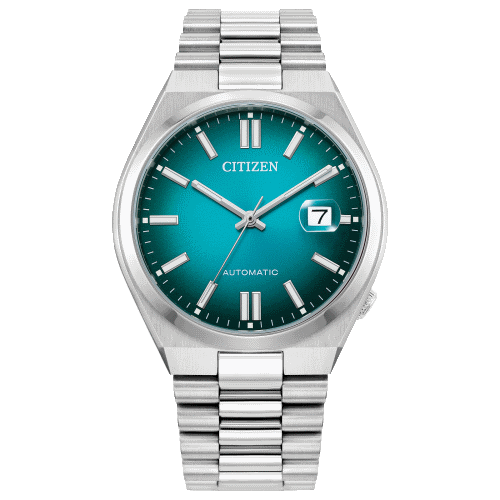
In contrast, Seiko’s design approach often celebrates traditional watchmaking with a blend of classic and modern elements. The Seiko Presage series, for instance, showcases the brand’s dedication to craftsmanship and traditional Japanese aesthetics. Presage watches are known for their intricate dials, inspired by Japanese artistry, including enamel, porcelain, and “Urushi” lacquer. These timepieces often feature complex designs with elegant details, such as textured dials, polished cases, and sophisticated color schemes. The Presage collection highlights Seiko’s ability to create watches that are not only functional but also artistic expressions of Japanese culture.
Seiko’s design diversity extends to other collections as well, such as the Seiko Prospex, which focuses on robust, adventure-ready designs tailored for diving and sports, and the Seiko Astron, known for its cutting-edge GPS solar technology in sleek, modern designs. These collections demonstrate Seiko’s ability to cater to a wide range of tastes and needs, from luxury dress watches to rugged sports models.
Citizen, on the other hand, also offers diverse styles across its various lines. The Citizen Promaster series, for example, is known for its sporty, technical designs suitable for professional divers and adventurers. The Promaster watches often feature bold, easy-to-read dials, luminous hands and markers, and rugged cases designed to withstand extreme conditions. Additionally, Citizen’s Signature Collection blends luxury with technology, offering refined designs with high-end materials and meticulous craftsmanship.
In summary, while Citizen emphasizes modernity, innovation, and practicality in its designs, as seen in the Tsuyosa and Promaster series, Seiko leans towards a blend of tradition and modernity, with a strong focus on craftsmanship and artistic detail, exemplified by the Presage and Prospex collections. Both brands excel in their respective areas, offering a wide range of styles that cater to different preferences and lifestyles.
Innovation
Both brands have a history of innovation in watchmaking. Look for features such as eco-friendly technologies (like Citizen’s Eco-Drive and Seiko’s Kinetic), advanced complications, or proprietary technologies that set them apart.
Citizen’s Eco-Drive technology, introduced in 1976, harnesses light – natural or artificial – to power the watch. This innovation eliminates the need for battery replacements, as the watch stores excess energy in a rechargeable cell. Eco-Drive watches can operate for months in the dark once fully charged, making them highly convenient and environmentally friendly. The technology represents a significant step towards sustainability in the watch industry, aligning with modern ecological concerns. As a result, Eco-Drive has become a hallmark of Citizen, significantly boosting the brand’s popularity. Many watch enthusiasts and eco-conscious consumers appreciate the practicality and environmental benefits of Eco-Drive watches.
On the other hand, Seiko’s Kinetic technology, introduced in 1986, converts the kinetic energy from the movement of the wearer’s wrist into electrical energy. This energy is stored in a rechargeable battery, providing the accuracy of a quartz watch with the convenience of an automatic movement. Kinetic watches can run for months without needing manual winding or battery changes, making them highly reliable for everyday use. Seiko’s Kinetic technology appeals to those who appreciate the blend of traditional watchmaking with modern innovation. The technology’s ability to harness the wearer’s motion ensures that the watch remains powered as long as it is worn regularly.
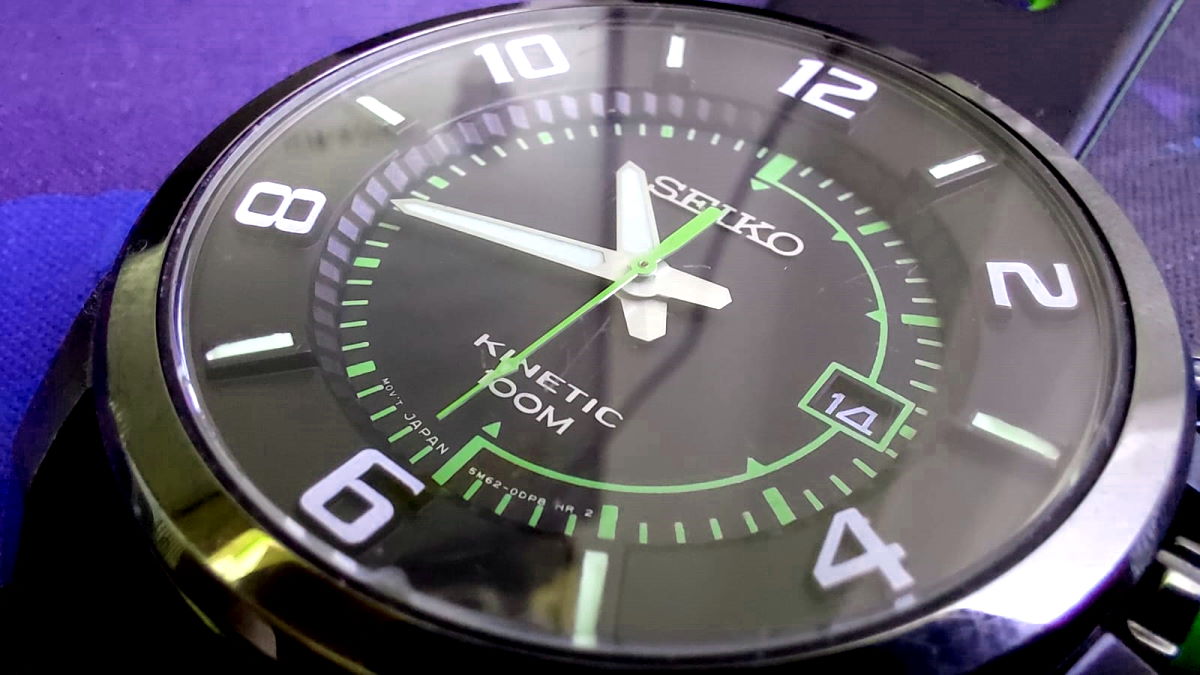
Related Post
Check the real owner’s review on the Seiko Kinetic watch. Explore the benefits and drawbacks of this movement.
In terms of popularity, both technologies have their dedicated followings. Citizen’s Eco-Drive is widely celebrated for its simplicity and environmental benefits. It has become a defining feature of the brand, with a broad range of models incorporating this technology, from casual to high-end watches. The Eco-Drive’s reputation for reliability and low maintenance has cemented Citizen’s position as a leader in solar-powered watches.
Seiko’s Kinetic technology, while equally innovative, tends to appeal to a different segment of the market. It is particularly popular among those who value the mechanical aspects of watchmaking but want the precision of quartz movements. Seiko has incorporated Kinetic technology into various models, including sports and dress watches, enhancing its appeal to a diverse audience. However, the need for occasional servicing of the Kinetic capacitor, despite its long lifespan, can be a consideration for potential buyers.
In conclusion, both Citizen’s Eco-Drive and Seiko’s Kinetic movements showcase significant advancements in watch technology. Eco-Drive stands out for its ecological benefits and convenience, making it highly popular among eco-conscious consumers. Kinetic technology, with its innovative use of kinetic energy and mechanical appeal, attracts those who appreciate the fusion of traditional and modern watchmaking. Both technologies reflect the brands’ commitments to innovation and reliability, maintaining strong positions in the competitive watch market.
Price range
Citizen and Seiko offer watches at various price points, from affordable entry-level pieces to high-end luxury models. Consider your budget and what features are most important to you when comparing prices.
When comparing the Citizen vs Seiko price ranges and target audiences, both brands demonstrate a broad appeal, catering to a wide spectrum of consumers from entry-level buyers to luxury watch enthusiasts.
Citizen watches generally range from about $100 for basic models to over $3,000 for high-end models in the Signature Collection and special editions. The Eco-Drive series, which is a significant portion of Citizen’s lineup, typically falls between $150 to $600. This price range makes Citizen watches accessible to many consumers, particularly those who value the brand’s innovative and environmentally-friendly technology. The brand’s emphasis on reliability, practicality, and advanced features, such as atomic timekeeping and Bluetooth connectivity, attracts tech-savvy and eco-conscious buyers.
In contrast, Seiko’s price range is extensive, starting from around $70 for basic models to over $6,000 for high-end Grand Seiko models. The Seiko 5 series is one of the brand’s most affordable lines, often priced between $100 to $300, making it popular among new watch enthusiasts and those seeking reliable automatic watches. Mid-range offerings like the Presage and Prospex lines typically range from $300 to $2,000.
These collections appeal to different segments, with the Presage series drawing those who appreciate traditional craftsmanship and elegant designs, and the Prospex series attracting adventurers and professionals needing robust, feature-rich timepieces. The Grand Seiko line, starting around $2,000 and going beyond $6,000, caters to high-end consumers and collectors who value meticulous craftsmanship, precision, and the heritage of Japanese watchmaking.
In summary, Citizen’s watches appeal broadly to eco-conscious consumers and tech enthusiasts, offering accessible pricing with models that balance practicality and innovation. Seiko, with its wide range from affordable to luxury, targets diverse segments from entry-level buyers to discerning collectors, showcasing a blend of traditional craftsmanship and modern technological advancements. Each brand’s pricing strategy reflects its commitment to offering a range of options that meet the varied needs and preferences of their audiences.
Durability and water resistance
When comparing the durability of Seiko vs Citizen watches, both brands have earned strong reputations, but their durability can be examined through various real-world reviews and user experiences.
Citizen watches are widely praised for their robustness and longevity, particularly models equipped with Eco-Drive technology. Eco-Drive watches, which harness light to power the watch, are not only convenient but also eliminate the need for regular battery replacements, contributing to their durability. A review on The Slender Wrist highlights the Citizen Promaster Diver as a reliable and durable choice for divers, noting its solid construction and resistance to harsh underwater conditions.
Moreover, the use of materials such as stainless steel and titanium, combined with features like scratch-resistant sapphire crystal on higher-end models, enhances the durability of Citizen watches. The Eco-Drive technology itself is designed to be long-lasting, with many users reporting decades of use without significant issues. Reviews frequently highlight the reliability and long lifespan of Citizen watches. For example, a reviewer on Gear Patrol mentions that Citizen’s Promaster series is known for its ruggedness, making it a top choice for professionals and adventurers alike .
Seiko watches also enjoy a stellar reputation for durability, with many models specifically designed to withstand tough environments. The Seiko Prospex series, for instance, is built for professional divers and adventurers, featuring robust cases, high water resistance, and durable materials like stainless steel and hardlex or sapphire crystals. The Seiko Prospex models are often commended for their toughness, with reviewers on sites like Hodinkee emphasizing their ability to endure harsh conditions without compromising performance .
The Urban Gentry, a popular watch review channel, praises the Seiko SKX007 for its exceptional durability and reliability under extreme conditions, making it a favorite among divers and outdoor enthusiasts.
Seiko’s durability extends to its mechanical watches as well. The Seiko 5 series, known for its affordable automatic movements, often receives positive feedback for its sturdy construction and reliable performance over long periods. The Grand Seiko line, positioned in the luxury segment, combines high-quality materials and meticulous craftsmanship, resulting in watches that are not only precise but also built to last.
Warranty and after-sales service
When comparing Citizen and Seiko in terms of warranty policies and after-sales services, several aspects emerge clearly, illustrating their respective strengths and weaknesses.
Citizen offers a five-year limited warranty, which is relatively generous in the watch industry. This warranty covers defects in materials and workmanship but does not extend to normal wear and tear, misuse, or damage from unauthorized services. Users often appreciate this extended coverage, as reflected in reviews on platforms like Watchuseek, where one user detailed a positive experience with Citizen’s service center. They praised the efficiency and professionalism, especially when their Eco-Drive watch was promptly repaired under warranty.
However, some reviews on Trustpilot highlight occasional issues with slow turnaround times and poor communication during the repair process, indicating that the consistency of Citizen’s after-sales service can vary depending on the region and service center.
Seiko, in contrast, typically provides a three-year limited warranty, which similarly covers defects in materials and workmanship but excludes normal wear and tear, misuse, and unauthorized repairs. High-end models, especially those from Grand Seiko, sometimes offer extended warranty periods.
Reviews of Seiko’s after-sales service are mixed. Positive feedback often emphasizes the quality and thoroughness of repairs, with users on aBlogtoWatch lauding the meticulous care and regular updates provided by Grand Seiko’s service centers. Conversely, some users report dissatisfaction due to long repair times and inadequate communication, as noted on Watchuseek. These varied experiences suggest that Seiko, like Citizen, faces challenges in maintaining consistent after-sales service across different regions.
Brand reputation
When comparing the reputations of Citizen and Seiko, it’s clear that both brands have carved out strong positions in the watchmaking industry, yet they cater to slightly different market segments and carry distinct brand perceptions.
Citizen is widely regarded for its innovative technology, particularly its Eco-Drive movement, which is praised for sustainability and convenience. The brand is often celebrated for its practical, reliable, and eco-friendly watches, making it a favorite among tech-savvy and environmentally conscious consumers. Reviews from sources like Watchuseek and Gear Patrol emphasize Citizen’s focus on value, durability, and advanced features, positioning the brand as a reliable choice for everyday wear and outdoor adventures. However, while Citizen’s Signature Collection offers high-end models, the brand overall is perceived more as a provider of robust, technologically advanced watches rather than luxury timepieces.
Seiko, on the other hand, enjoys a reputation for blending traditional craftsmanship with modern innovation, appealing to a broader spectrum of watch enthusiasts. The brand is particularly known for its diverse range, from the affordable Seiko 5 series to the prestigious Grand Seiko line. Reviews from aBlogtoWatch and Hodinkee frequently highlight Seiko’s attention to detail, quality, and heritage, particularly in their mechanical and luxury segments. The Grand Seiko models, with their meticulous craftsmanship and premium materials, are often cited as examples of horological excellence, earning the brand a reputation that edges into the luxury market more significantly than Citizen.
Authoritative sources like WatchTime and The Urban Gentry underscore Seiko’s commitment to precision and craftsmanship, elevating its status slightly above Citizen in terms of luxury appeal. Grand Seiko, in particular, is frequently mentioned alongside Swiss luxury brands, which underscores Seiko’s positioning in the higher echelons of watchmaking.
In conclusion, while both Citizen and Seiko are esteemed for their innovation and reliability, Seiko is perceived as a slightly more luxurious brand. This is especially true with the Grand Seiko line, which is renowned for its superior craftsmanship and precision, thus positioning Seiko a bit higher on the luxury spectrum compared to Citizen.
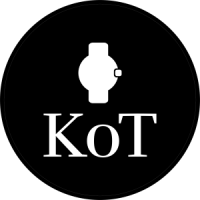

Leave a Reply